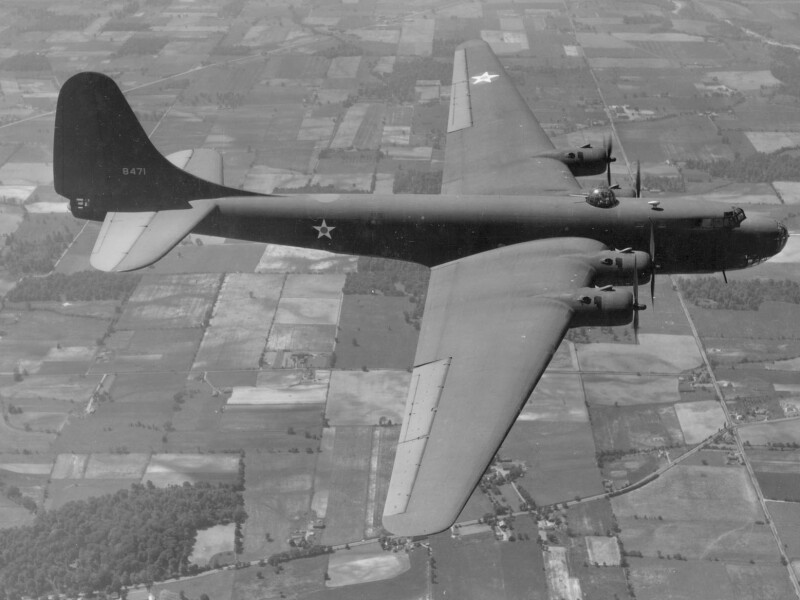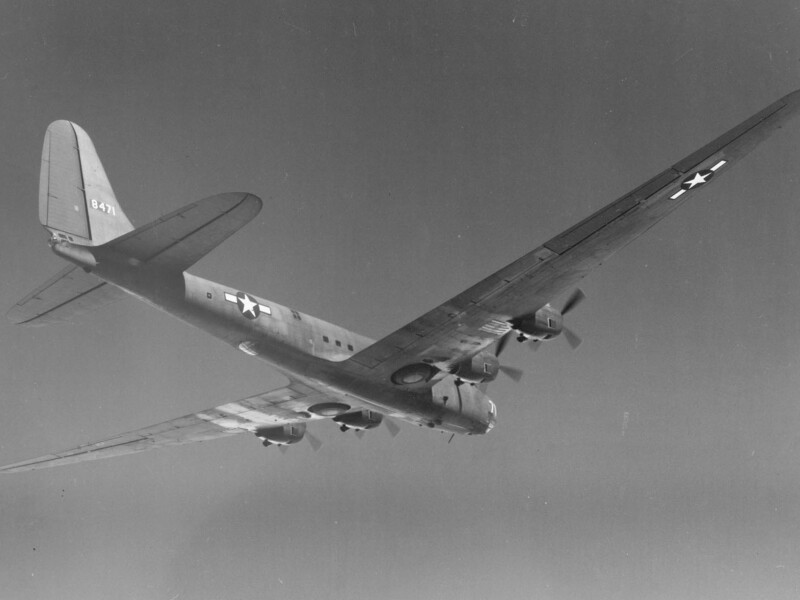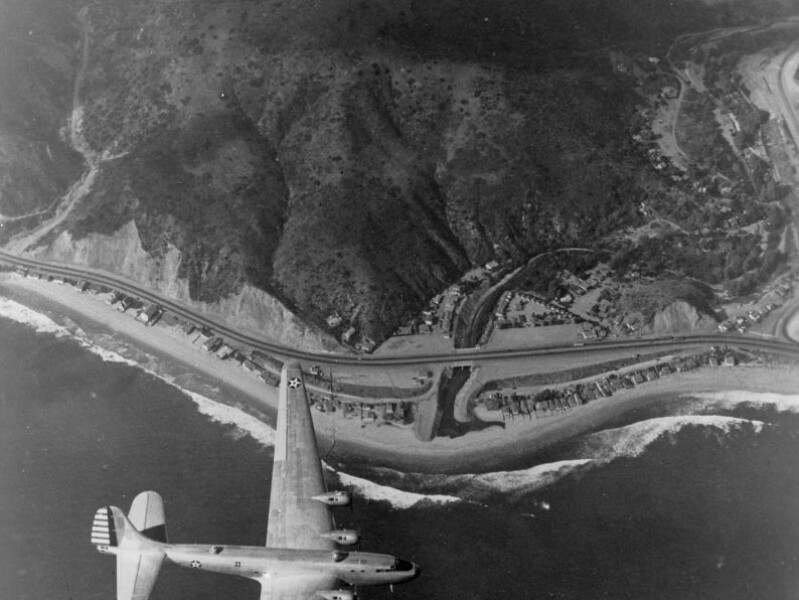-
Library
- Photos
- Documents
-
Geography
- Airfields
- Areas
-
Aviation
- Aircraft
- Engines
-
Weapons
- Guns
- Rockets
- Torpedoes
-
Avionics
- Radio
- Radar
- IFF
- Radar Detectors
- Jammers
- Navigation Devices
-
Unit Database
- Allied Units
- Axis Units
-
Pilot Database
- Pilots
- Victory Claims
- Torpedo Attacks
Photos
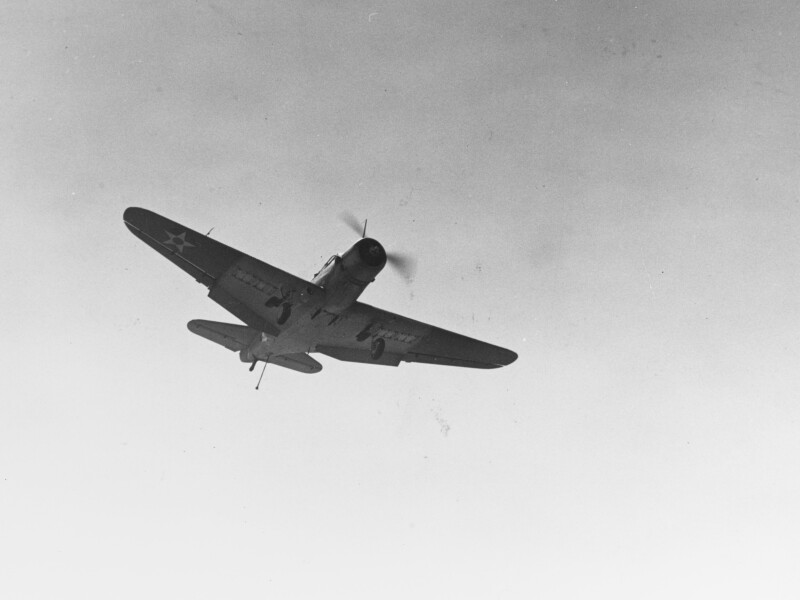
of Torpedo Squadron Six (VT-6) Passes over USS Enterprise (CV-6) during flight operations on 29 July 1941. The plane's arrestor hook and wheels are down, indicating that it is attempting to land. Official U.S. Navy Photograph, now in the collections of the National Archives.
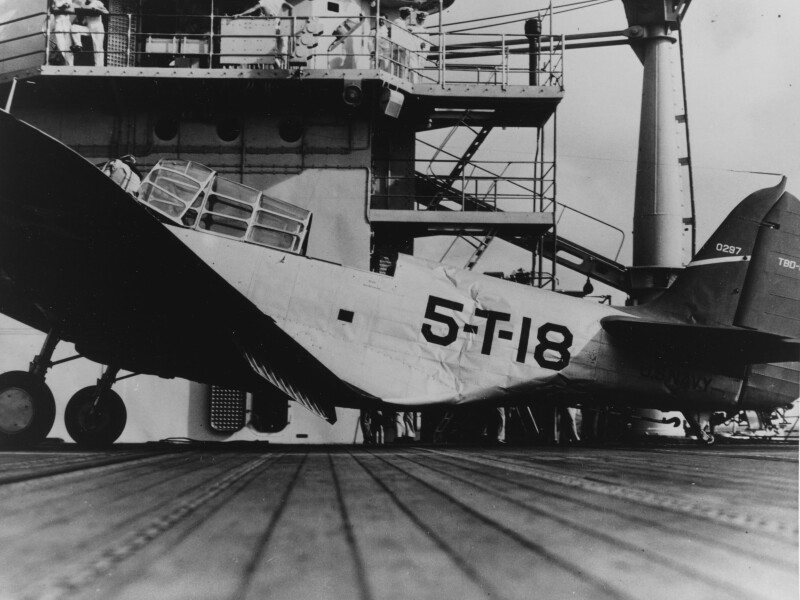
(Bureau # 0297), of Torpedo Squadron Five (VT-5) With a wrinkled fuselage, following a landing accident on USS Yorktown (CV-5), 3 September 1940. The after end of the carrier's island is in the background. This aircraft was ultimately assigned to Torpedo Squadron Eight (VT-8), and was lost in the Battle of Midway on 4 June 1942. Courtesy of Thomas E. Doll. U.S. Naval History and Heritage Command Photograph.
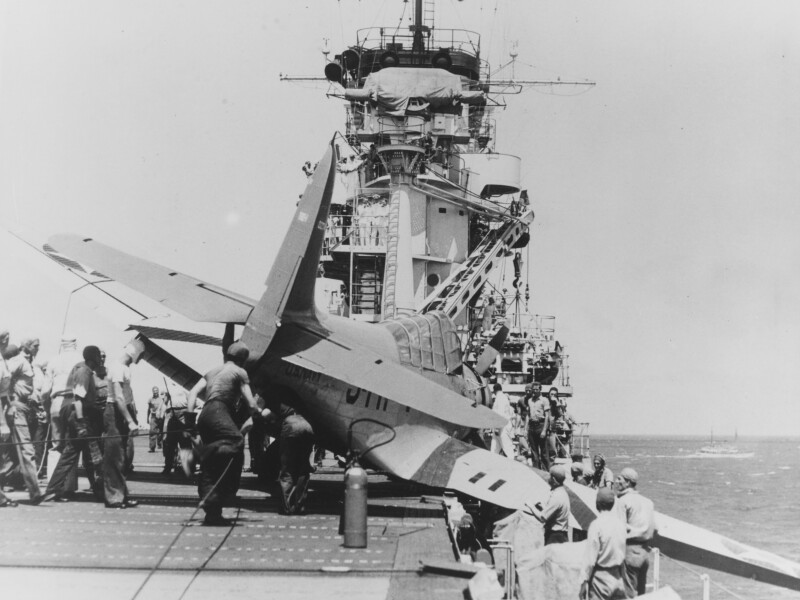
(Bureau # 0284), of Torpedo Squadron Five (VT-5) In the starboard catwalk of USS Yorktown (CV-5), 3 September 1940, following a landing accident. Pilot was Electrician's Mate First Class (Naval Aviation Pilot) C.M. O'Brien. The after end of the carrier's island is in the background. Ultimately assigned to Torpedo Squadron Eight (VT-8), This aircraft was lost on 4 June 1942 during the Battle of Midway. Courtesy of Thomas E. Doll, 1984. U.S. Naval History and Heritage Command Photograph.

(Bureau # 0320), of Torpedo Squadron Three (VT-3) At Naval Air Station, North Island, California, 22 August 1940. It is painted in McClelland Barclay experimental camouflage design number 7. This aircraft was lost at the Battle of the Coral Sea in May 1942, while serving with Torpedo Squadron Two on USS Lexington (CV-2). U.S. Naval History and Heritage Command Photograph.
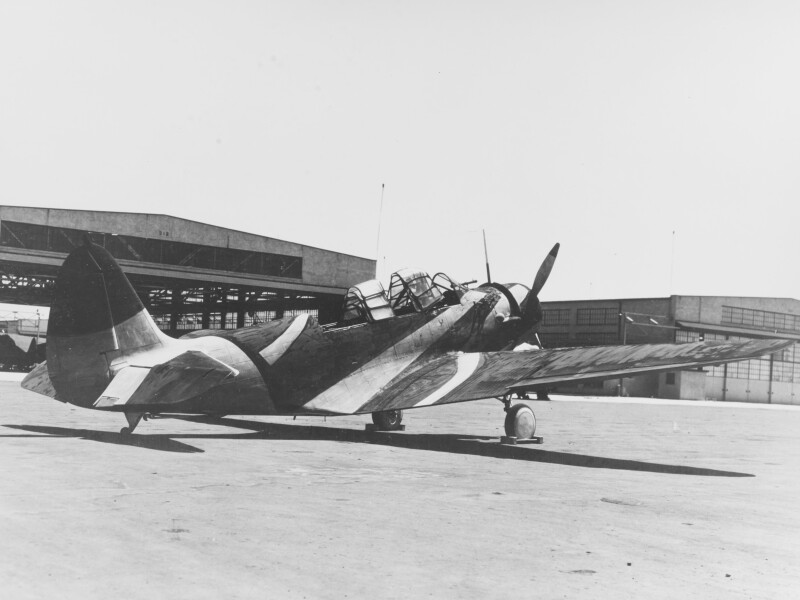
(Bureau # 0320), of Torpedo Squadron Three (VT-3) At Naval Air Station, North Island, California, 22 August 1940. It is painted in McClelland Barclay experimental camouflage design number 7. This aircraft was lost at the Battle of the Coral Sea in May 1942, while serving with Torpedo Squadron Two on USS Lexington (CV-2). U.S. Naval History and Heritage Command Photograph.
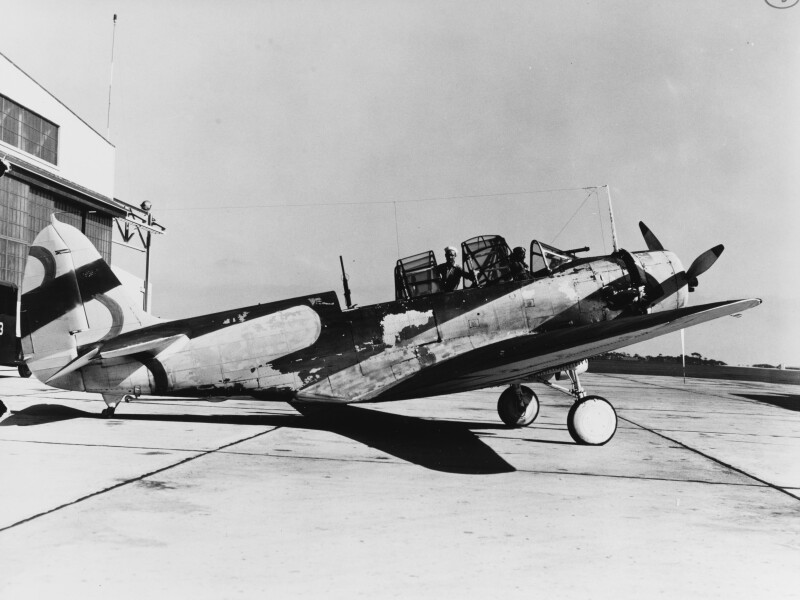
(Bureau # 0339), of Torpedo Squadron Three (VT-3) At Naval Air Station, North Island, California, 22 August 1940. It is painted in McClelland Barclay experimental camouflage design number 8. Note .30 caliber machinegun in the plane's after cockpit. Original side markings, 3-T-? can be faintly seen on the after fuselage through the badly weathered paint job. This aircraft was lost at the Battle of the Coral Sea in May 1942, while serving with Torpedo Squadron Two on USS Lexington (CV-2). U.S. Naval History and Heritage Command Photograph.

(Bureau # 0339), of Torpedo Squadron Three (VT-3) At Naval Air Station, North Island, California, 22 August 1940. It is painted in McClelland Barclay experimental camouflage design number 8. This aircraft was lost at the Battle of the Coral Sea in May 1942, while serving with Torpedo Squadron Two on USS Lexington (CV-2). U.S. Naval History and Heritage Command Photograph.
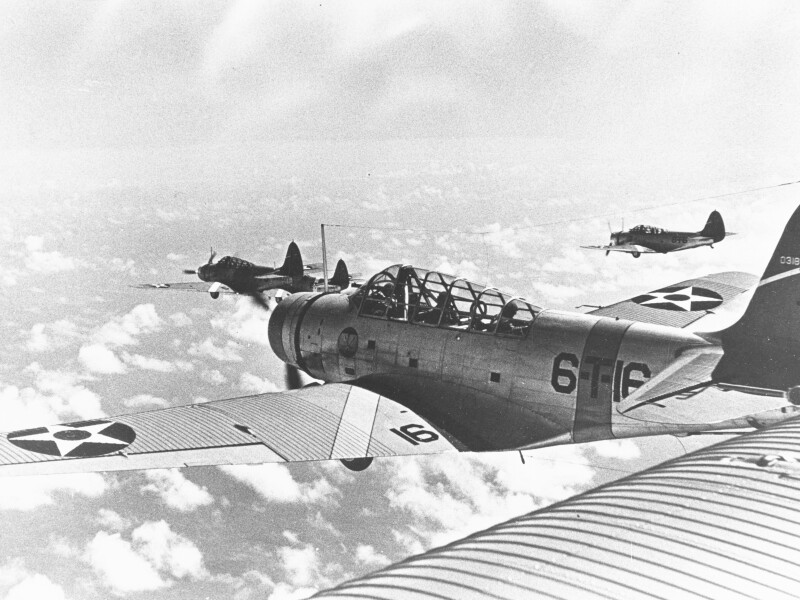
of Torpedo Squadron Six (VT-6), from USS Enterprise (CV-6) In flight, circa 1939. Plane closest to the camera is Bureau # 0318. Note how stripes painted on wings assist pilots in maintaining three-plane V formation. Collection of Vice Admiral George C. Dyer, USN (Retired). U.S. Naval History and Heritage Command Photograph.
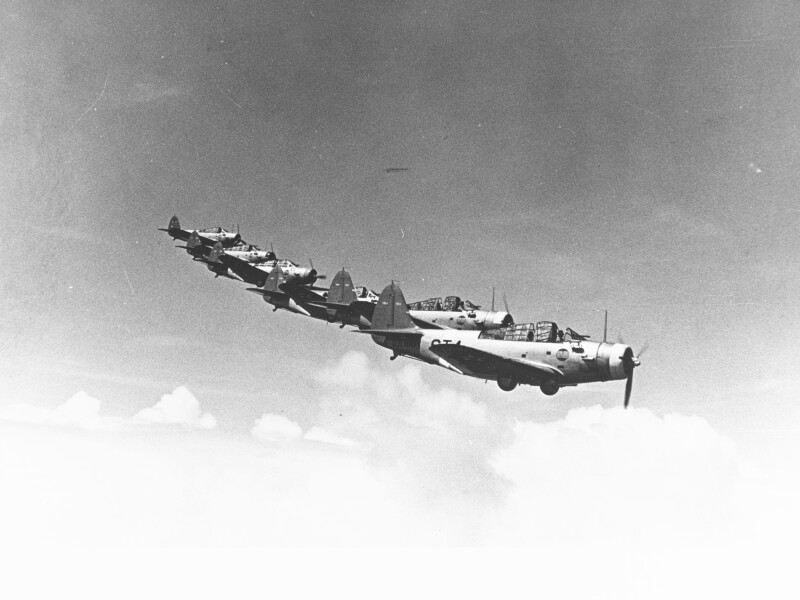
of Torpedo Squadron Six (VT-6), from USS Enterprise (CV-6) Fly in formation, circa 1939. Plane closest to the camera is Bureau # 1511, which was lost while assigned to Torpedo Squadron Three, probably while operating from USS Yorktown (CV-5) during the Battle of Midway. Collection of Vice Admiral George C. Dyer, USN (Retired). U.S. Naval History and Heritage Command Photograph.
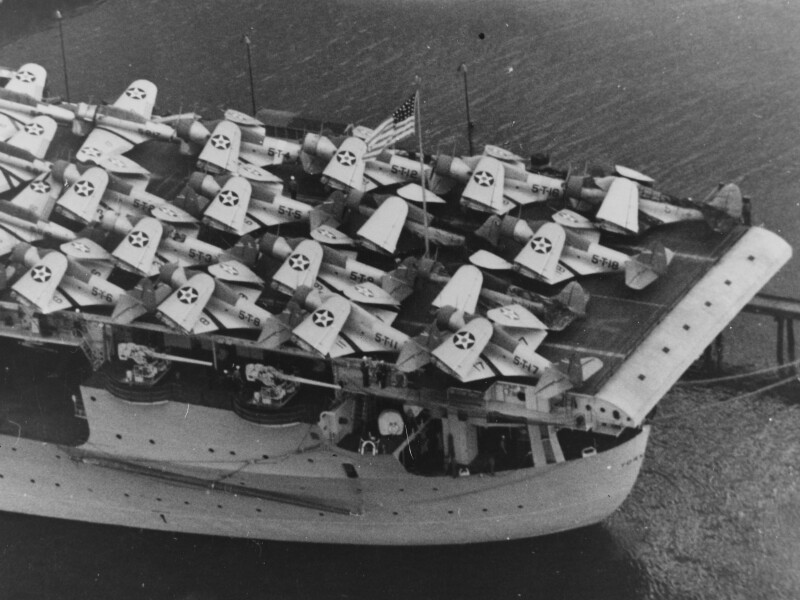
of Torpedo Squadron Five (VT-5) Parked on the after flight deck of USS Yorktown (CV-5) at Naval Air Station, North Island, San Diego, California, in June 1940. Three of these aircraft are painted in an experimental color scheme used during Fleet Problem XXI. This section of the ship was examined when Yorktown's wreck was located in May 1998. The after thirty feet (approximately) of the flight deck was missing, but most other features seen were present, including the ship's name on her stern. This view is cropped from Photo # 80-G-652042. U.S. Naval History and Heritage Command Photograph.
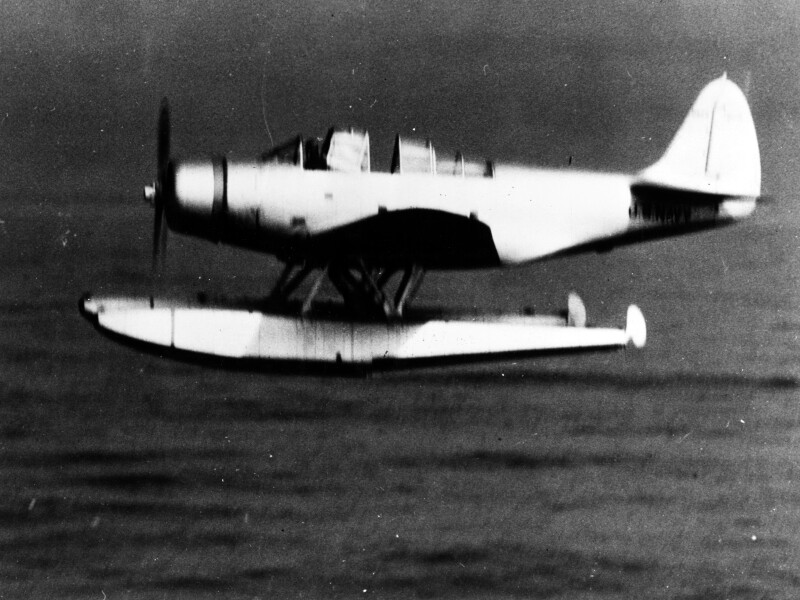
(Bureau # 0268) In low-level flight during torpedo drop tests at the Newport Torpedo Station, Rhode Island, 10 October 1941. Official U.S. Navy Photograph, now in the collections of the National Archives.
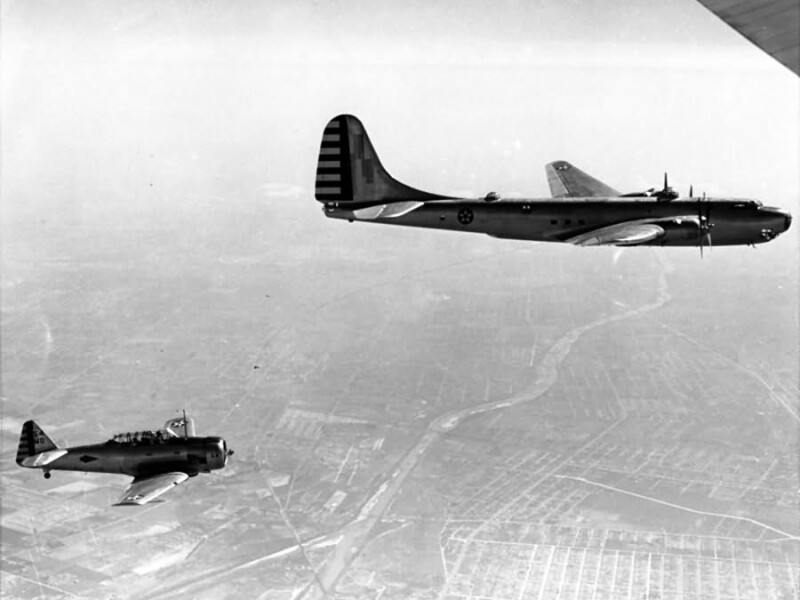
Douglas XB-19 in flight with a North American AT-6

